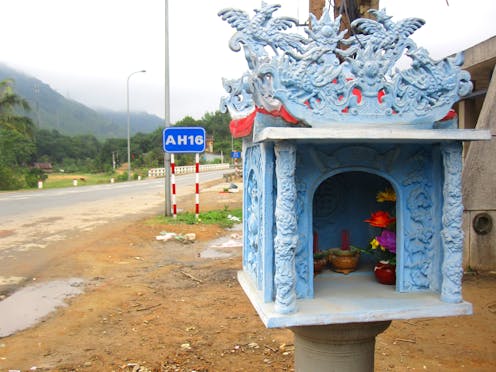Travelling through Southeast Asia, many tourists might notice small roadside shrines and Spirit Houses. Adorning shopfronts and homes, this practice ranges from makeshift shrines to ornate architectural buildings. Depending on regional differences, Spirit Houses might be filled with votive offerings such as talismans, flowers, fresh fruit, alcoholic beverages and incense.
Part of the overlooked every day, I didn’t know much about the function – let alone the social frameworks – for the Spirit House. Growing up in Vietnam in a Catholic family among our Buddhist and Daoist neighbours, I was aware that shrines, with their many variations, were incorporated across all different religions, classes of people and ethnic communities. Spirit Houses and shrines were simply a part of daily life.

It was not until my family resettled to Australia that I noticed the distinct lack of Spirit Houses in this new environment. Although memorials for traffic accidents can be spotted along roads and highways, it would be unusual to encounter small roadside shrines and altars. I had not given this much thought until one of my Uncles came to visit us from Vietnam.
He remarked on how the roadside memorials in Australia seemed to honour victims of accidents, rather than be a preventative way to protect people from the traffic. His passing comment was completely at odds with my own spiritual logic. How can a shrine or Spirit House possibly offer protection for passersby? Throughout Vietnam’s te.
















